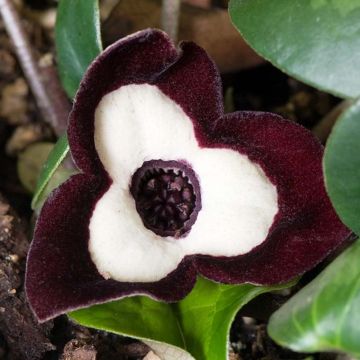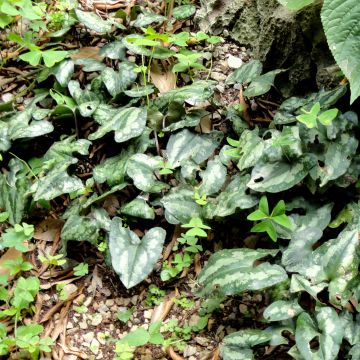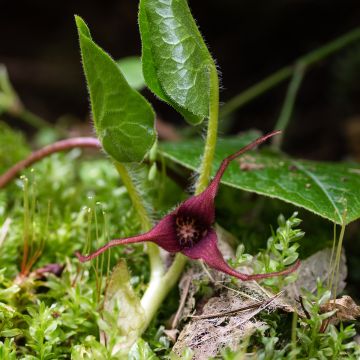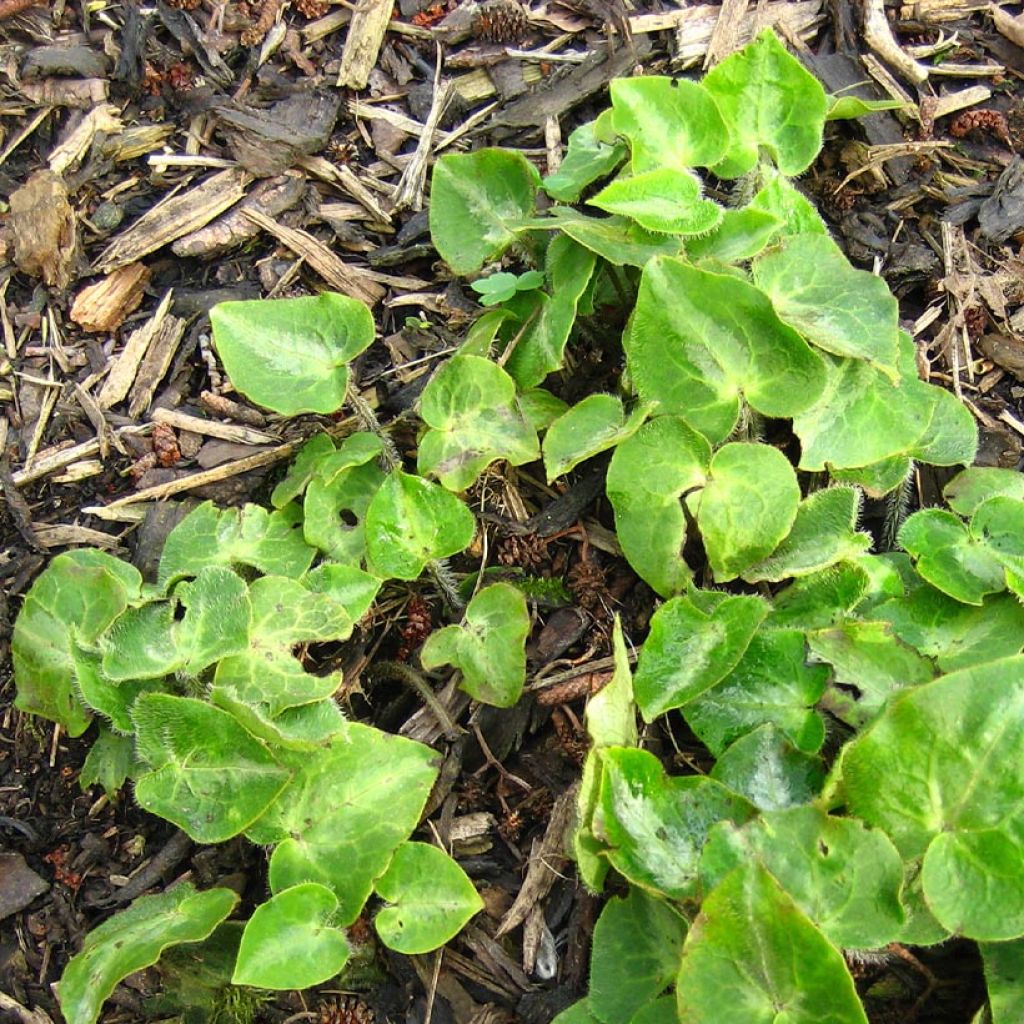

Asarum pulchellum - Wild Ginger
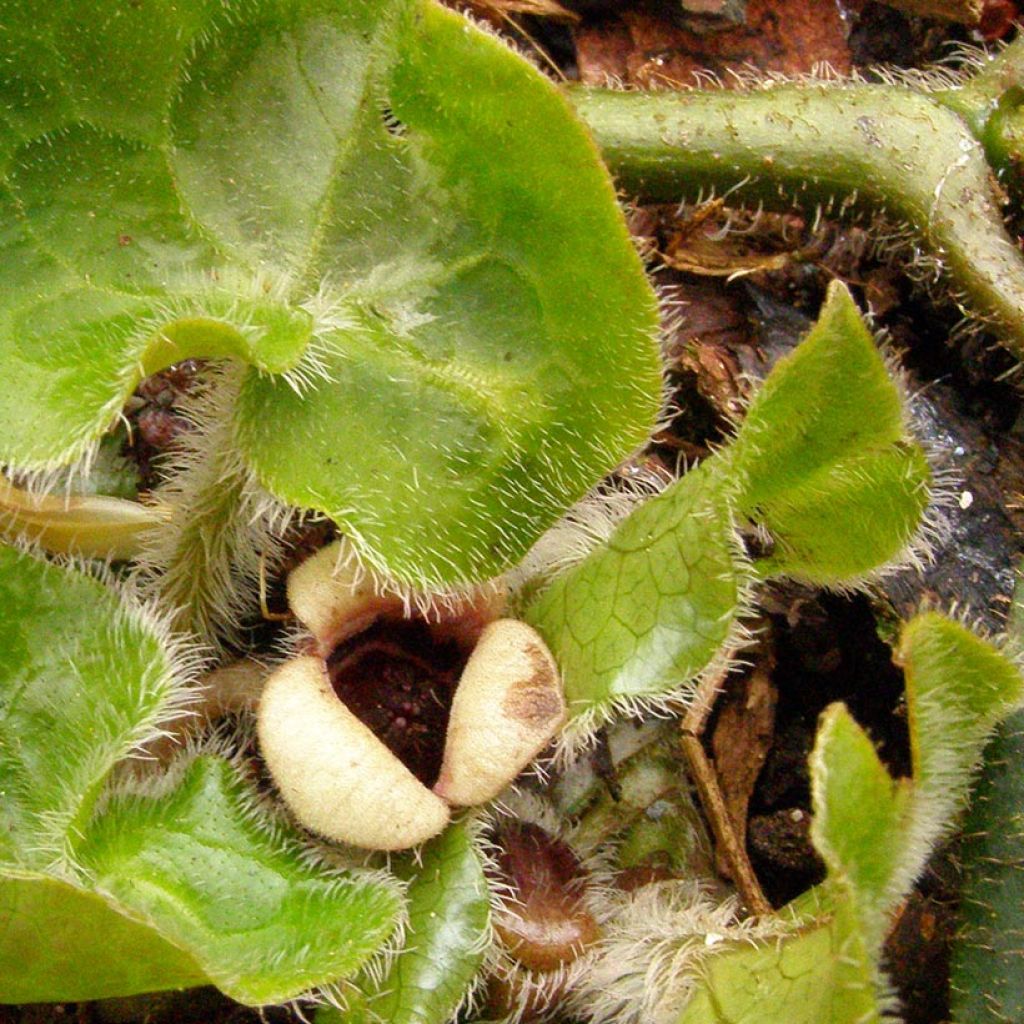

Asarum pulchellum - Wild Ginger
Asarum pulchellum - Wild Ginger
Asarum pulchellum
Wild Ginger
This plant carries a 12 months recovery warranty
More information
We guarantee the quality of our plants for a full growing cycle, and will replace at our expense any plant that fails to recover under normal climatic and planting conditions.
From €5.90 for pickup delivery and €6.90 for home delivery
Express home delivery from €8.90.
Does this plant fit my garden?
Set up your Plantfit profile →
Description
Asarum pulchellum is a small perennial plant of Chinese origin that forms an excellent ground cover in shady and cool areas. This wild ginger carpets the ground with its beautiful heart-shaped, hairy, and glossy leaves, which remain decorative even in winter. In early spring, curious tiny, white flowers with a dark throat, bloom under the leaves. It is a vigorous and hardy plant, easy to grow in any soil that is not too compact, and it spreads nicely among rocks. You can also plant it at the base of taller plants, in the ground and in containers.
Asarum pulchellum belongs to the Aristolochiaceae family. It is native to temperate and subtropical Asia, specifically central and southern China. Its natural habitat consists of mixed forests (deciduous and evergreen trees) at altitudes between 700 and 1700 metres (2297 and 5577 feet). It is a rhizomatous perennial plant covered with fine hairs. Over time, it forms a tangled carpet that does not exceed 10-15 cm (4-6in) high. Its leaves are cordate to ovate, 5 to 8 cm (2 to 3in) long and 5 to 9.5 cm (2 to 4in) wide, arranged in pairs. Each leaf is carried by a whitish and hairy petiole, 10 to 20 cm (4 to 8in) long. The foliage remains evergreen in winter. The leaves are fairly light green, sometimes marbled with grey. Flowering occurs in March-April, very close to the ground. The flowers are solitary and urn-shaped, composed of a purple calyx on the outside and white on the inside, with 3 lobes and 9 to 12 stamens. This pulchellum species seems to be ignored by snails and other slugs.
Asarum are ground-covering perennials of mountain woodlands with often evergreen and highly decorative foliage. They make beautiful shade ground covers, suitable for moist, rich in humus, well-drained soil. Plant them alongside epimediums, hostas, Hakonehloa, heucheras, Solomon's seals, and trilliums that appreciate the same conditions.
Report an error about the product description
Asarum pulchellum - Wild Ginger in pictures
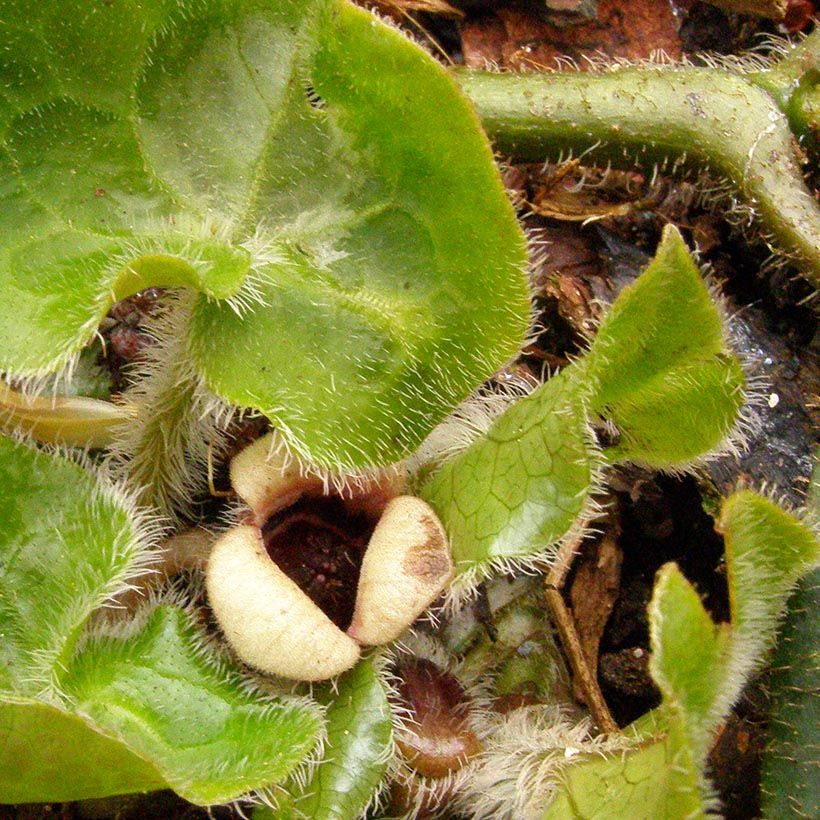

Flowering
Foliage
Plant habit
Botanical data
Asarum
pulchellum
Aristolochiaceae
Wild Ginger
China
Other Asarum
Planting and care
Plant Asarum in autumn or spring, in shade or partial shade, in light soil, rich in humus, not drying out in summer. These very easy plants have no particular requirements and are resistant to cold, to -15°C (5°F). Just make sure to water them regularly in the first year, especially during dry periods, to promote establishment.
This plant will withstand root competition and can be planted at the base of spring shrubs.
Protect the crown with dead leaves in cold regions where snow does not provide natural protection.
Planting period
Intended location
Care
This item has not been reviewed yet - be the first to leave a review about it.
Haven't found what you were looking for?
Hardiness is the lowest winter temperature a plant can endure without suffering serious damage or even dying. However, hardiness is affected by location (a sheltered area, such as a patio), protection (winter cover) and soil type (hardiness is improved by well-drained soil).

Photo Sharing Terms & Conditions
In order to encourage gardeners to interact and share their experiences, Promesse de fleurs offers various media enabling content to be uploaded onto its Site - in particular via the ‘Photo sharing’ module.
The User agrees to refrain from:
- Posting any content that is illegal, prejudicial, insulting, racist, inciteful to hatred, revisionist, contrary to public decency, that infringes on privacy or on the privacy rights of third parties, in particular the publicity rights of persons and goods, intellectual property rights, or the right to privacy.
- Submitting content on behalf of a third party;
- Impersonate the identity of a third party and/or publish any personal information about a third party;
In general, the User undertakes to refrain from any unethical behaviour.
All Content (in particular text, comments, files, images, photos, videos, creative works, etc.), which may be subject to property or intellectual property rights, image or other private rights, shall remain the property of the User, subject to the limited rights granted by the terms of the licence granted by Promesse de fleurs as stated below. Users are at liberty to publish or not to publish such Content on the Site, notably via the ‘Photo Sharing’ facility, and accept that this Content shall be made public and freely accessible, notably on the Internet.
Users further acknowledge, undertake to have ,and guarantee that they hold all necessary rights and permissions to publish such material on the Site, in particular with regard to the legislation in force pertaining to any privacy, property, intellectual property, image, or contractual rights, or rights of any other nature. By publishing such Content on the Site, Users acknowledge accepting full liability as publishers of the Content within the meaning of the law, and grant Promesse de fleurs, free of charge, an inclusive, worldwide licence for the said Content for the entire duration of its publication, including all reproduction, representation, up/downloading, displaying, performing, transmission, and storage rights.
Users also grant permission for their name to be linked to the Content and accept that this link may not always be made available.
By engaging in posting material, Users consent to their Content becoming automatically accessible on the Internet, in particular on other sites and/or blogs and/or web pages of the Promesse de fleurs site, including in particular social pages and the Promesse de fleurs catalogue.
Users may secure the removal of entrusted content free of charge by issuing a simple request via our contact form.
The flowering period indicated on our website applies to countries and regions located in USDA zone 8 (France, the United Kingdom, Ireland, the Netherlands, etc.)
It will vary according to where you live:
- In zones 9 to 10 (Italy, Spain, Greece, etc.), flowering will occur about 2 to 4 weeks earlier.
- In zones 6 to 7 (Germany, Poland, Slovenia, and lower mountainous regions), flowering will be delayed by 2 to 3 weeks.
- In zone 5 (Central Europe, Scandinavia), blooming will be delayed by 3 to 5 weeks.
In temperate climates, pruning of spring-flowering shrubs (forsythia, spireas, etc.) should be done just after flowering.
Pruning of summer-flowering shrubs (Indian Lilac, Perovskia, etc.) can be done in winter or spring.
In cold regions as well as with frost-sensitive plants, avoid pruning too early when severe frosts may still occur.
The planting period indicated on our website applies to countries and regions located in USDA zone 8 (France, United Kingdom, Ireland, Netherlands).
It will vary according to where you live:
- In Mediterranean zones (Marseille, Madrid, Milan, etc.), autumn and winter are the best planting periods.
- In continental zones (Strasbourg, Munich, Vienna, etc.), delay planting by 2 to 3 weeks in spring and bring it forward by 2 to 4 weeks in autumn.
- In mountainous regions (the Alps, Pyrenees, Carpathians, etc.), it is best to plant in late spring (May-June) or late summer (August-September).
The harvesting period indicated on our website applies to countries and regions in USDA zone 8 (France, England, Ireland, the Netherlands).
In colder areas (Scandinavia, Poland, Austria...) fruit and vegetable harvests are likely to be delayed by 3-4 weeks.
In warmer areas (Italy, Spain, Greece, etc.), harvesting will probably take place earlier, depending on weather conditions.
The sowing periods indicated on our website apply to countries and regions within USDA Zone 8 (France, UK, Ireland, Netherlands).
In colder areas (Scandinavia, Poland, Austria...), delay any outdoor sowing by 3-4 weeks, or sow under glass.
In warmer climes (Italy, Spain, Greece, etc.), bring outdoor sowing forward by a few weeks.

































